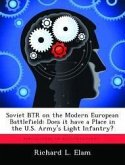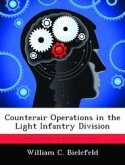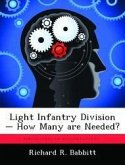The purpose of this monograph is to determine if the tactical reconnaissance capabilities of the U.S. Army's Light Infantry Division are sufficient to conduct counterinsurgency combat operations. The current light division was created to deal with low-intensity combat contingencies such as counterinsurgency warfare. By design, the division possesses limited intelligence gathering capability. Likewise, the division may be required to operate with austere support from corps and theater army. Within such an environment, forces conducting combat operations against guerrilla or light infantry forces must be employed efficiently to be effective. The key to that efficiency rests with the availability of timely and sufficient tactical intelligence. The study begins by identifying the doctrinal tactical reconnaissance requirements associated with counterinsurgency combat operations. The capabilities of the light division with appropriate corps intelligence plugs are determined and analyzed with regard to mission requirements. U.S. experiences in conducting counterinsurgency combat operations during the Vietnam conflict are then reviewed to verify doctrinal reconnaissance requirements, to determine the effectiveness of U.S. tactical reconnaissance efforts and to assess their affect on combat operations. The capabilities of the light division are then compared to the requirements developed to identify shortcomings in the division's reconnaissance capabilities. The study concludes that HUMINT, especially tactical reconnaissance, is critical in executing low-intensity, combat operations such as counterinsurgency warfare. The division's tactical reconnaissance capability is limited and inadequate to meet its tactical intelligence gathering needs when employed in a counterinsurgency role. The LID's lack of adequate tactical reconnaissance assets raises serious doubts as to the ability of the LID to execute effectively a counterinsurgency mission. Similarly, the division's signifi








